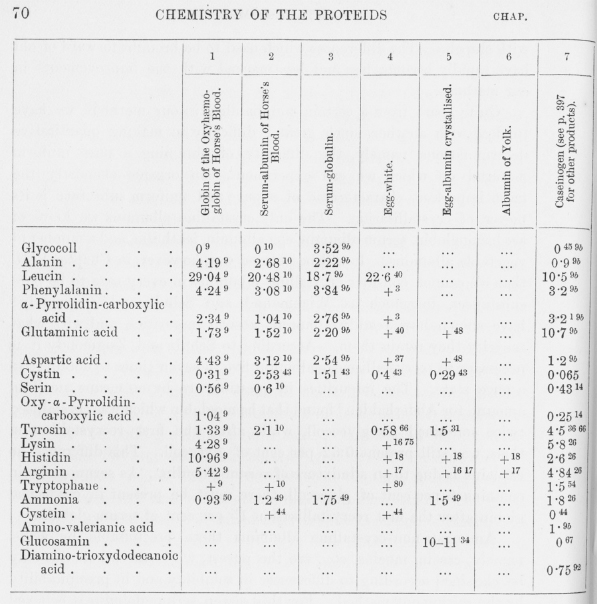
While it is obvious to us that most proteins are composed of 20 amino acids, chemists in the late nineteenth century struggled to understand protein composition. At the turn of the century only several dozen proteins were known, including so-called albumins (including serum albumins, lactoglobulins, fibrinogen, myosin, and histones), proteids (e.g., hemoglobin and mucins), and albuminoids (e.g., collagen, keratin, elastin, and amyloid). Of these proteins only a very small group were available in pure form as crystals (e.g., hemoglobin and serum albumin from horse, ovalbumin, and ichthulin [salmon albumin]). Gustav Mann (1906, p. 70–75) described the dissociation products of 51 assorted proteins into their fundamental units. The results are shown for seven proteins (see columns). The rows indicate various compounds found upon dissolving the proteins. Most of these are amino acids; for example, glycocoll is a name formerly given to glycine. This table shows that from the earliest times that proteins could be analyzed, scientists made an effort to understand both the nature of individual protein molecules and the relationships of related proteins from different species.
10
![]()
Protein Analysis and Proteomics
INTRODUCTION
A living organism consists primarily of five substances: proteins, ...
Get Bioinformatics and Functional Genomics, Second Edition now with the O’Reilly learning platform.
O’Reilly members experience books, live events, courses curated by job role, and more from O’Reilly and nearly 200 top publishers.

